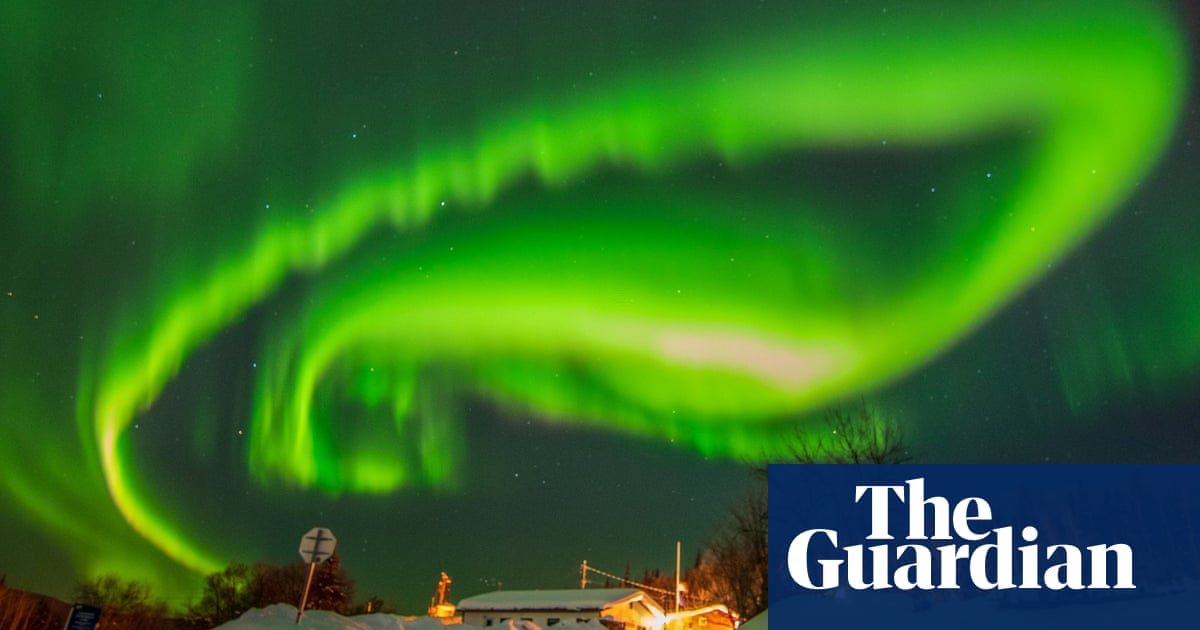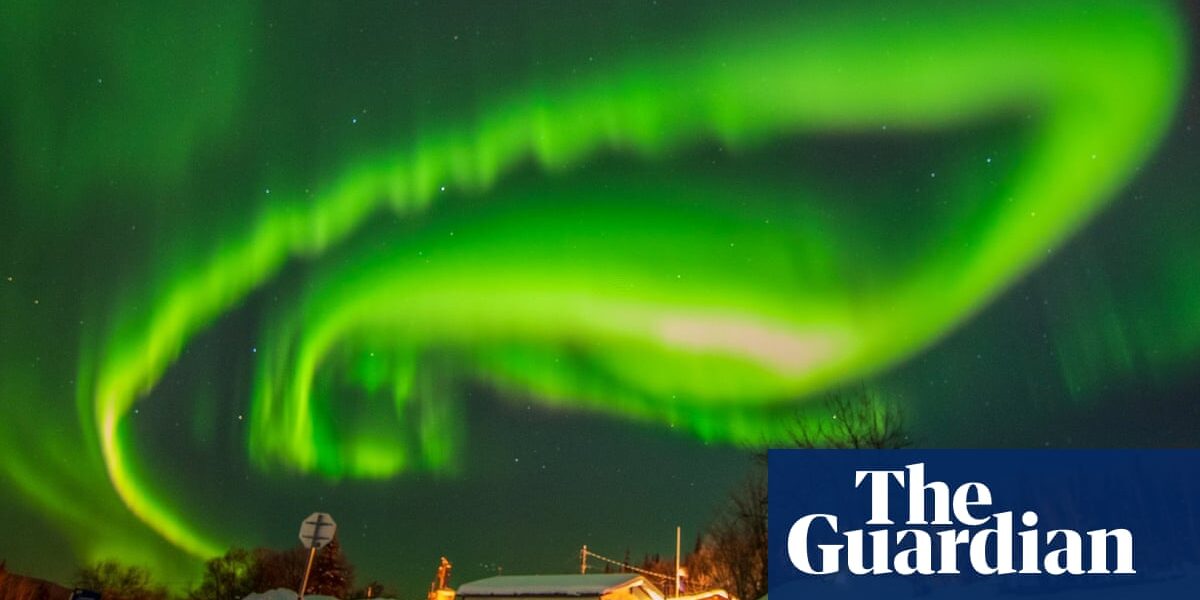The aurora borealis are forecasted to appear in the United States and United Kingdom on Monday evening due to the impact of solar storms.

Particles from solar eruptions are heading towards Earth and causing breathtaking auroras in the northern and southern hemispheres.
It is possible to see the aurora borealis, also known as the northern lights, in the northern hemisphere on Monday night in the US, reaching as far south as the midwest. This phenomenon, typically seen in the Arctic Circle, may also be visible in Scotland.
The southern lights, known as aurora australis, may be seen in southern Australia, spanning from Victoria to Western Australia.
At the same time, there will be a mesmerizing display of light, coinciding with a penumbral lunar eclipse that can be observed from anywhere in the world.
The Bureau of Meteorology’s space weather forecasting center in Australia issued an alert on Monday morning about a severe solar storm currently happening, which could result in the visibility of the southern lights.
Coronal mass ejections trigger storms by releasing clouds of plasma from the sun’s outer atmosphere. These particles then move towards Earth and create a magnificent display as they interact with the Earth’s magnetic field.
The Kaus Index in Australia registered a peak of 6, which indicates high levels of geomagnetic activity. This suggests that auroras may be visible in parts of Tasmania, along the coast of Victoria, and even on the south-west coast of Western Australia.
The two variations of aurora are typically observed near the magnetic poles, which are located in northern Canada and near the coast of Antarctica. Magnetic poles are in constant motion and are distinct from the geographic poles.
As the storm worsens, the auroras will appear farther from the poles.
Intense storms have the potential to cause disturbances in the power grid and interfere with satellite functions for navigation, surveillance, and communication. They also pose a potential risk of radiation exposure to astronauts and individuals aboard high-altitude aircraft.
A representative from the Bureau of Meteorology stated that noteworthy space weather can have repercussions on technology and crucial infrastructure assets in both Earth and its surrounding space.
The Bureau of Meteorology recommends that individuals wishing to witness the aurora australis locate a dark location, such as a beach or hill with a clear southern perspective. Ideal conditions include dark skies without moon or clouds, and being away from city lights. The optimal viewing time is between 10pm and 2am.
In the previous year, there were documented sightings of dazzling night skies spanning from Busselton in Western Australia to Ballarat and Canberra.
According to Dr Stuart Ryder, an astronomer at Macquarie University, it is probable that the 11-year solar cycle is approaching its highest point this year.
According to the speaker, there is a transition from a peaceful state with few sunspots on the surface to a more intense period about five or six years afterwards, with a peak in the number of sun spots.
“It is highly probable that the sun will emit massive bursts of energy, emitting large amounts of charged particles outward…typically appearing as green or red hues, although individuals have also observed blues, yellows, and purples.”
A stronger flare with a higher intensity increases the likelihood of people living closer to the equator being able to witness it.
According to the spokesperson for the BoM, the present cycle commenced in 2019.
According to a spokesperson, the initial forecast was for the solar maximum of this cycle to occur in 2025. However, current agreement among experts in space weather suggests that this cycle may reach its peak earlier, possibly in 2024.
“This suggests that there will be increased solar activity in the coming years, but it’s important to note that significant space weather events can also happen at other points in the cycle.”
At approximately 7pm in Sydney and 7:30pm in Melbourne tonight, the moon will be obscured by the Earth’s shadow, also known as the penumbra.
The upcoming eclipse can be observed in various locations, such as certain areas in Europe, North and South America, as well as parts of Asia and Africa. More information for those interested in viewing it can be found on timeanddate.com.
Ryder stated that the eclipse will already be half completed when the moon rises above the horizon. He also noted that even after the moon has risen, it will not pass through the center of the Earth’s shadow. Since it is a full moon, the upper portion may appear slightly darker as it is further within the shadow.
“After exiting the shadow, the moon will return to its full luminosity, which could potentially hinder the visibility of the aurora for people.”
Source: theguardian.com


